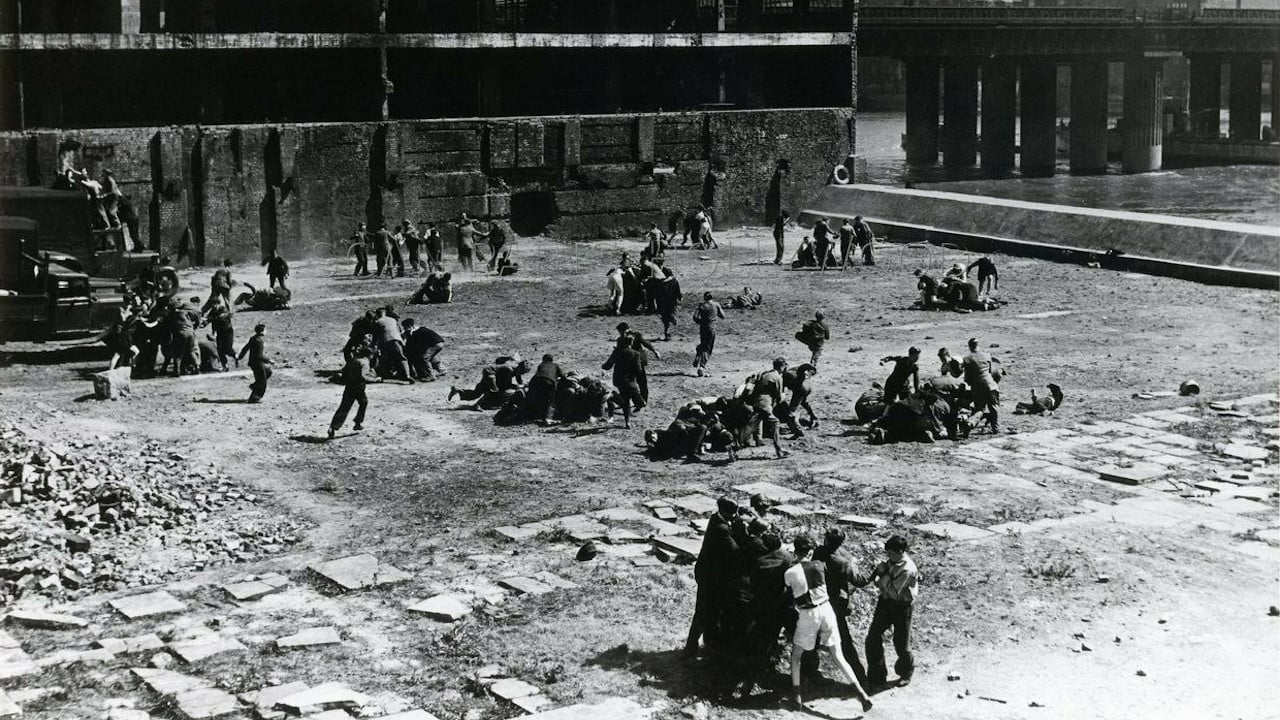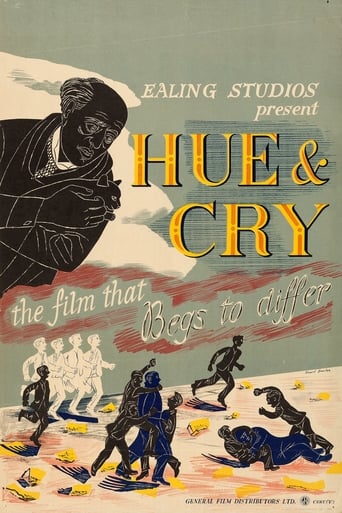

Don't allow the images of bombed areas of London to be used to brainwash you into believing the propaganda about W.W. II.The German blitz against London was in retaliation for English attacks against German cities.In July 1940, Churchill ordered Bomber Command to start devastating Berlin as soon as feasible, even though Germany had bombed no English cities.It was the English, not the Germans, who had heavy bombers that were designed for flattening cities. The Germans had only medium and smaller bombers.It was the war-mongering English whose policy it was to start wars in Europe in order to weaken any country that could rival their power.It was the bullies, war-mongers, and war-criminals known as the English, not the Germans, who bragged that they "ruled the waves". It was the English who bragged that the sun never set on their empire. It was the English who were lording it over the people of Ireland before and during W.W. I. It was the English who maintained a blockade of Germany for seven months after W.W. I ended, causing the death by starvation of hundreds of thousands of people. It was the English who were lording it over the people of India before and during W.W. II. It was the English who started W.W. II by declaring war on Germany. It was the English who were the first to commit the war crime of carpet-bombing cities.
... View MoreLike some other reviewers I first saw H and C at the now long-forgotten Saturday morning pictures and it was thoroughly enjoyed by just about everyone there. Such a refreshing change from the usual feature films they dredged up for us, most of which seemed to date from the early thirties and to be based om motor racing.Having seen it many times since it's difficult now to know what I remember from that first time but I do recall the remark of the sadly missed Joan Dowling when they first descended into the sewers, "Coo, dunnit pong", causing great hilarity. Easily pleased or what? Much as I enjoyed reading the reviews here I have to take issue with some. One claims that the lack of swearing among the boy gang indicated some sort of superior morality back in 1946. Actually it was because bad language was simply not permitted in films then and I can assure everyone that in real life there would have been plenty. Another stated that Anthony Newley was in it. He wasn't. I think the reviewer was fooled by the Newley-like looks of Roy, played by Stanley Escane. And a third thinks that jumping on the stomach of the chief villain and killing him was a bit strong. I saw the film recently and there is no indication that he was killed, merely winded. It was perhaps unpleasant but if anything the scene where the bent cop was catapulted and stunned was worse. That could have killed or blinded him.I was more interested in the review by Robert Temple. I have nothing against the gentleman and he is entitled to his opinion but I feel that some of his comments are misguided and on occasion just plain wrong. He seems for example to read into H and C, with its use of bomb sites and derelict buildings, some sort of metaphor for WWII but I think he's reading too much into this. The film was made on location in London in 1946 when the makers would have been hard put to it not to include bomb sites. They were an unavoidable backdrop to the action, not a part of it, though as they existed use was made of them. The film is simply no more than what used to be called a rattling good yarn and thankfully does not contain any 'messages'.Further, amid what I have to say is a welter of name dropping, Mr Temple not only (wrongly) thinks that some of the action takes place in Tilbury but also makes a glaring geographical error in placing Tilbury in the East End despite its position in Essex some 12 or 13 miles from the fringes of the East End at East Ham. While there is certainly a Chadwell (St Mary) in Tilbury this is similarly miles from the scene of the action at the end of the film which is, officially at any rate, at Wapping and I suspect that Mr Temple has confused Chadwell with Shadwell, which is next door to Wapping and therefore does come within the East End.
... View MoreEccentric boys' adventure writer Felix H Wilkinson (Sim) has his copy - "The Enthralling Adventures of Selwyn Pike and his Youthful Assistant Smiler" - altered by master crooks, using a special code through the pages of kids' comic 'Trump'. Only sharp-eyed schoolboy Joe Kirby (Fowler) seems to have noticed, but fails to convince a sceptical Detective Inspector Ford (Lambert).Undeterred, Kirby enlists the help of a gang of bombsite-dwelling little cockneys, the self-styled 'Blood and Thunder Boys' to up-end the criminals' dastardly plans. Wilkinson is persuaded to alter his copy and catch the robbers, headed by Kirby's boss Nightingale (Warner, cast against type as a baddie), and Trump secretary Rhona Watson (White).Originally billed with the slogan, "The Ealing film that begs to differ", Hue And Cry is less a comedy (actually, it's Ealing Studios' first acknowledged 'comedy') than a thrilling adventure story for older kids; the occasional punch-up scenes are peculiarly realistic. Director Crichton weaves a fantastic, but bizarrely believable yarn, helped no end by his unsentimental, dedicated cast.The standout performer is Sim, whose potty writer, despite limited screen time, pretty much waltzes off with the entire picture - whether he's castigating the crooks ("The insolent scoundrels, they've purloined one of my codes - the very code I invented for the 'Case of the Limping Skeleton!'") or tremulously backing out of the deal ("Remember what happened to Nicky the Narc in the 'Case of the Creeping Death'?").Acclaimed cinematographer Dougie Slocombe makes great use of post-Blitz London locations, including Holborn Viaduct, Docklands, and Covent Garden - particularly for the climactic scenes of hundreds of boys teeming Battleship Potemkin-fashion down the capital's steps toward the scene of the crime. While an almost incidental scene of a small boy re-enacting an aerial dogfight on a bombsite leaves viewers in no doubt about the psychological impact of the World War II on a new generation.
... View MoreThis was the first of the Ealing comedies and after fifty years it is still entertaining.The only thing that hasn't stood the test of time is the overacting of Alistair Sim as a writer of boy's adventure stories. The kids in the film are wonderfully natural.Pictorially it is an interesting look at a London still suffering from the war. Most of the film was shot on location and the kids playgrounds were the bomb damaged buildings. During the climatic scenes there are some magnificent shots, taken from above, where it appears as though every kid in London is rushing through the streets to help capture the criminals.Oddly enough, although very different, the movie had somewhat the same scenic look as THE THIRD MAN. Both were set in bomb damaged cities and in HUE AND CRY there is even a scene where the kids escape through the sewers of London, predating Harry Lime's famous scene in the sewers of Vienna.North Americans may find the accents rather a deterrent but I think the film is well worth the effort.
... View More